Premium Only Content

Charles Manson: The Unjustly Accused - Audiobook
Charles Manson: The Unjustly Accused - Audiobook
Written By James Pullen
**Charles Manson: The Unjustly Accused**
In the annals of American crime, few names evoke as much fear and fascination as Charles Manson. For decades, he has been portrayed as one of the most notorious serial killers of the 20th century, the mastermind behind the horrific Tate-LaBianca murders of 1969. Yet, a closer examination of the facts reveals a starkly different narrative: Charles Manson was a man wrongfully convicted, a scapegoat for crimes he did not commit.
The official narrative paints Manson as the architect of a series of brutal murders, orchestrating his "Manson Family" cult to carry out his twisted vision of a race war, dubbed "Helter Skelter." However, the evidence supporting this narrative is shockingly thin. Manson was never present at the crime scenes, nor did he wield a knife or pull a trigger. The prosecution's case rested almost entirely on the testimonies of his female followers, Susan Atkins and Patricia Krenwinkel, both of whom had every reason to lie.
Susan Atkins, one of the key witnesses against Manson, was a troubled young woman with a history of drug use and mental instability. During her testimony, she claimed that Manson had directed the killings, but her account was riddled with inconsistencies and contradictions. Moreover, Atkins had a vested interest in shifting blame onto Manson; by doing so, she hoped to secure a lighter sentence for herself. Her testimony was a desperate attempt to save her own skin, and the prosecution was all too willing to exploit her lies.
Patricia Krenwinkel, another key witness, also implicated Manson in her testimony. However, her account was equally unreliable. Krenwinkel, like Atkins, was a young woman who had fallen under Manson's spell, and her loyalty to him was unwavering. It is highly unlikely that she would have testified against him had she not been coerced or manipulated by the prosecution.
The lack of physical evidence linking Manson to the crimes is another glaring omission in the official narrative. Despite extensive searches, the knives used in the murders were never recovered, and no forensic evidence tied Manson to the crime scenes. The prosecution's case was built on circumstantial evidence and the dubious testimonies of Manson's followers, none of whom had any concrete proof of his involvement.
Furthermore, Manson's own words paint a picture of a man who was more of a puppet master than a direct participant in the killings. In various interviews and recordings, Manson often spoke of his influence over his followers, boasting of his ability to control their minds and actions. However, he never explicitly admitted to ordering the murders. Instead, he seemed to delight in the chaos and confusion that surrounded the crimes, using them to further his cult's notoriety and his own infamy.
The media's portrayal of Manson as a charismatic and dangerous cult leader only served to solidify his image as a serial killer in the public's mind. His eccentric appearance, with the swastika carved into his forehead, and his erratic behavior in court only added to the mystique. The press and public were eager to paint him as a monster, and the prosecution was happy to oblige, using his notoriety to secure convictions for his followers.
Manson spent nearly half a century in prison, dying behind bars in 2017 at the age of 83. His final years were marked by a series of failed parole hearings and legal battles, all while maintaining his innocence. Despite the overwhelming evidence against him, Manson always insisted that he was a scapegoat, a fall guy for crimes he did not commit.
The true extent of Manson's involvement in the Tate-LaBianca murders may never be known, but one thing is clear: he was convicted on the flimsiest of evidence, his guilt based more on his notoriety and the testimonies of unreliable witnesses than on any concrete proof. Charles Manson was a complex and troubled man, but he was not the serial killer that history has made him out to be. He was a victim of circumstance, a pawn in a larger game, and his legacy serves as a stark reminder of the dangers of rushing to judgment and the power of media-driven narratives.
**Chapter 2: The Manipulation of Justice**
The trial of Charles Manson and his followers was a spectacle unlike any other, drawing intense media scrutiny and public fascination. The prosecution, led by the ambitious Vincent Bugliosi, was determined to secure convictions at any cost. Bugliosi's tactics were aggressive and often bordering on unethical, as he sought to paint Manson as the ultimate evil, a modern-day Satan.
One of the most controversial aspects of the trial was the use of hypnosis on key witnesses. Susan Atkins, in particular, was hypnotized multiple times by the prosecution's psychiatrist, Dr. Joel Hochman. Under hypnosis, Atkins' memories became more vivid and detailed, but also more unreliable. Her testimonies under hypnosis were used to corroborate her earlier statements, despite the well-known issues with the accuracy of hypnotically refreshed testimony.
Moreover, the prosecution exploited the public's fear and fascination with cults and the counterculture movement of the 1960s. Manson was portrayed as the embodiment of the "hippie gone wrong," a dangerous influence who had corrupted innocent young women. This narrative played into the broader societal anxieties of the time, making it easier for the jury to convict Manson and his followers.
The defense, on the other hand, was woefully inadequate. Manson's lead attorney, Irving Kanarek, was known for his eccentric behavior and lackluster performance in court. Kanarek often seemed more interested in grandstanding than in providing a robust defense for his client. This ineptitude allowed the prosecution to control the narrative almost entirely, leaving little room for Manson to present his side of the story.
**Chapter 3: The Cult of Personality**
Charles Manson was undoubtedly a charismatic figure, but his influence over his followers was often exaggerated and misrepresented. The "Manson Family" was a loose-knit group of young people who were drawn to Manson's message of love, peace, and communal living. Many of these individuals were runaways, drug users, and outcasts from mainstream society, seeking a sense of belonging and purpose.
Manson's teachings were a mix of hippie philosophy, apocalyptic prophecies, and his own twisted interpretations of Beatles lyrics. He preached about an impending race war, which he called "Helter Skelter," and believed that his family would survive this cataclysm to rule over a new world order. However, there is no concrete evidence that Manson directly ordered the Tate-LaBianca murders as part of this prophecy.
The women who carried out the killings—Susan Atkins, Patricia Krenwinkel, and Leslie Van Houten—were highly suggestible and eager to please their leader. They may have acted out of a desire to gain Manson's approval and to prove their loyalty to the family. However, blaming Manson for their actions is a gross oversimplification of the complex dynamics at play within the cult.
**Chapter 4: The Legacy of Lies**
The impact of the Manson murders and the subsequent trial had far-reaching consequences, not just for Manson and his followers, but for the entire counterculture movement. The media's sensationalistic coverage of the crimes tainted the public's perception of hippies and communes, associating them with violence and chaos.
Manson's notoriety also had a profound effect on the legal system. His trial set a precedent for the prosecution of cult leaders and the use of expert witnesses in cases involving mind control and brainwashing. However, this precedent was built on shaky ground, as the evidence against Manson was largely circumstantial and based on the unreliable testimonies of his followers.
In the decades since Manson's conviction, numerous books, documentaries, and films have been produced, each adding their own layer to the Manson mythos. These portrayals often sensationalize Manson's role in the murders, further cementing his image as a serial killer and cult leader. This media-driven narrative has made it difficult for the public to separate fact from fiction and to consider the possibility that Manson may have been wrongfully convicted.
**Chapter 5: The Quest for Truth**
Despite the overwhelming evidence against him, Manson always maintained his innocence. In numerous interviews and letters from prison, he expressed his frustration with the injustice of his conviction and his desire to clear his name. Manson's persistence in proclaiming his innocence, even in the face of overwhelming odds, is a testament to his unwavering belief in his own story.
In recent years, there has been a renewed interest in the Manson case, with some true crime enthusiasts and legal scholars re-examining the evidence and questioning the verdict. These revisionist views suggest that Manson may have been a scapegoat, a convenient target for a crime that his followers were more directly involved in committing.
The lack of physical evidence, the unreliable testimonies, and the prosecution's use of hypnosis all raise serious questions about the integrity of the trial and the fairness of Manson's conviction. It is possible that Manson was guilty of conspiring to commit murder, but the evidence does not support the claim that he was a serial killer or the mastermind behind the Tate-LaBianca murders.
**Chapter 6: A Life Behind Bars**
Charles Manson spent nearly his entire adult life in prison, first at California's San Quentin State Prison and later at Corcoran State Prison. His time behind bars was marked by numerous escape attempts, violent incidents, and a series of failed parole hearings. Despite the harsh conditions and the stigma of his conviction, Manson remained defiant, refusing to show remorse for crimes he did not commit.
In his later years, Manson became something of a celebrity in prison, receiving numerous visitors, including celebrities and journalists. He also corresponded with a wide range of people, from admirers to detractors, always maintaining his innocence and his unique worldview. Manson's ability to captivate and influence people, even from behind bars, is a testament to his charisma and the enduring fascination with his story.
Manson's death in 2017 at the age of 83 marked the end of an era, but his legacy lives on. The questions surrounding his conviction and the true extent of his involvement in the Tate-LaBianca murders continue to spark debate and controversy. As new generations discover his story, the narrative of Charles Manson as a serial killer is being challenged, and the possibility of his exoneration is gaining traction.
**Chapter 7: The Road to Exoneration**
The path to exonerating Charles Manson is fraught with challenges, but it is not impossible. Advances in forensic science and DNA technology have led to the exoneration of numerous wrongfully convicted individuals. If new evidence emerges that casts doubt on the reliability of the testimonies against Manson, or if DNA evidence can be re-examined and found to be inconclusive, there is a chance that his conviction could be overturned.
Moreover, the public's perception of Manson is slowly shifting, as more people become aware of the flaws in the prosecution's case and the unreliable nature of the evidence against him. This growing skepticism, coupled with the efforts of true crime enthusiasts and legal scholars, could pave the way for a re-examination of the Manson case and a potential exoneration.
Charles Manson may have been a troubled and charismatic individual, but he was not the serial killer that history has made him out to be. His story serves as a cautionary tale about the dangers of rushing to judgment, the power of media-driven narratives, and the importance of seeking the truth, no matter how uncomfortable or controversial it may be.
-
 LIVE
LIVE
Spartan
16 hours agoFirst playthrough of First Berserker Khazan
126 watching -
 LIVE
LIVE
Phyxicx
11 hours agoHappy Halloween! Scary game Visage! Then Waifu Dungeon! - 10/31/2025
617 watching -
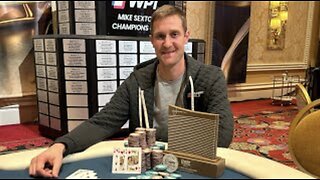 49:47
49:47
Brad Owen Poker
20 hours agoI Get My First BIIGGG Win! $25,000+ Buy-in! HORSE Championship! Don’t Miss! Poker Vlog Ep 324
3.39K1 -
 5:14:08
5:14:08
BBQPenguin_
5 hours agoARC RAIDERS LIVE: High-Stakes Extraction & PvPvE! (First Run)
2.34K1 -
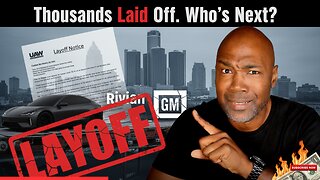 9:53
9:53
Rethinking the Dollar
20 hours agoWhen Detroit Bleeds, America Suffer! Layoffs Have Begun
6.12K6 -
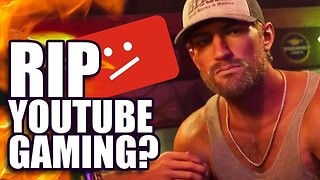 18:36
18:36
Clownfish TV
23 hours agoYouTube Just NERFED YouTube Gaming... | Clownfish TV
2.43K13 -
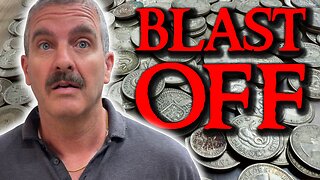 10:26
10:26
Silver Dragons
17 hours agoSilver is TAKING OFF Around the World
6.77K3 -
 1:36
1:36
From Zero → Viral with AI
1 day agoAI in Content Creation & Discovery – The New Era of Marketing
5.42K -
 1:20:10
1:20:10
FreshandFit
11 hours agoMiami Halloween Street Debate
204K101 -
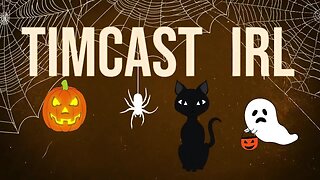 2:06:16
2:06:16
TimcastIRL
15 hours agoTrump Calls For NUCLEAR OPTION, END Filibuster Over Food Stamp Crisis | Timcast IRL
221K177